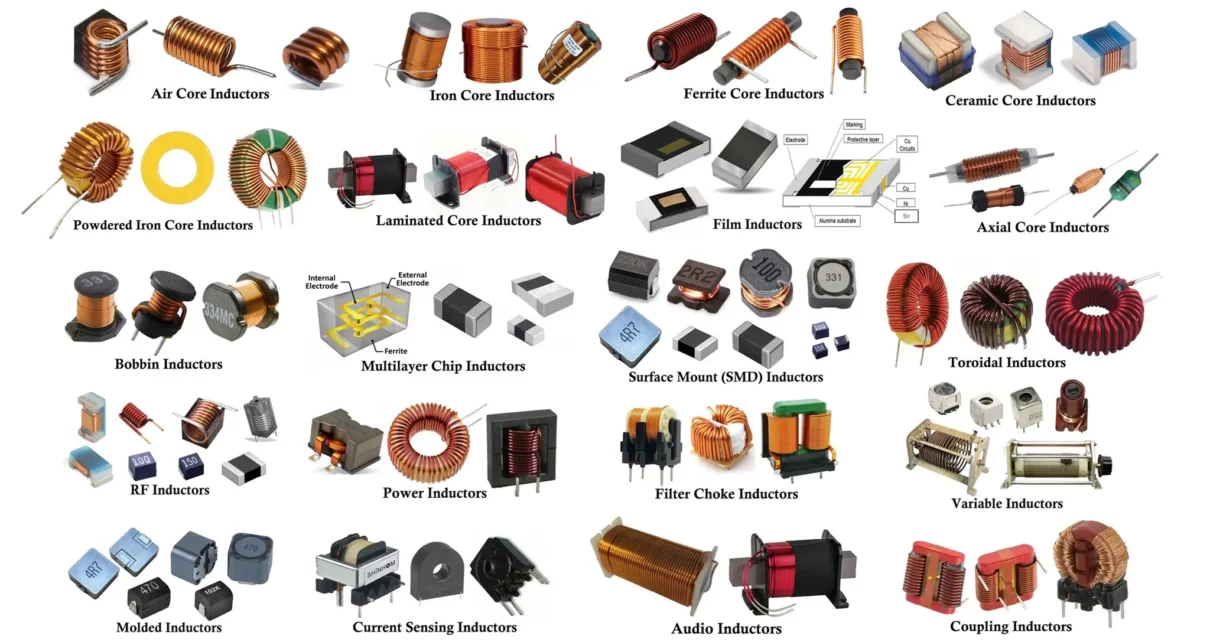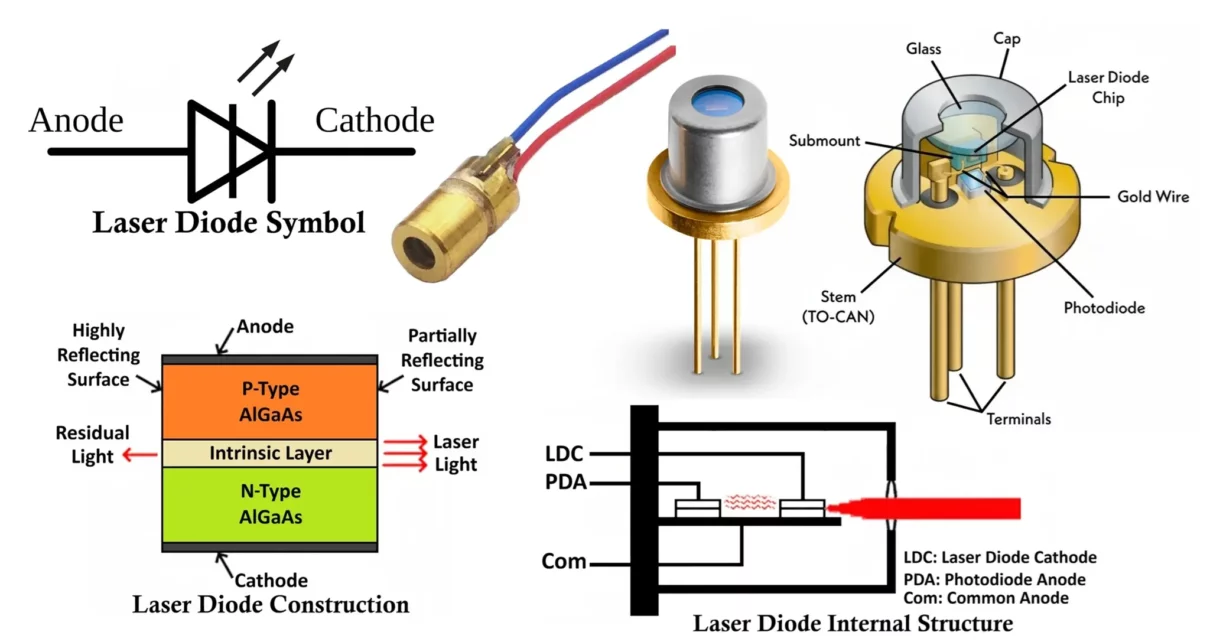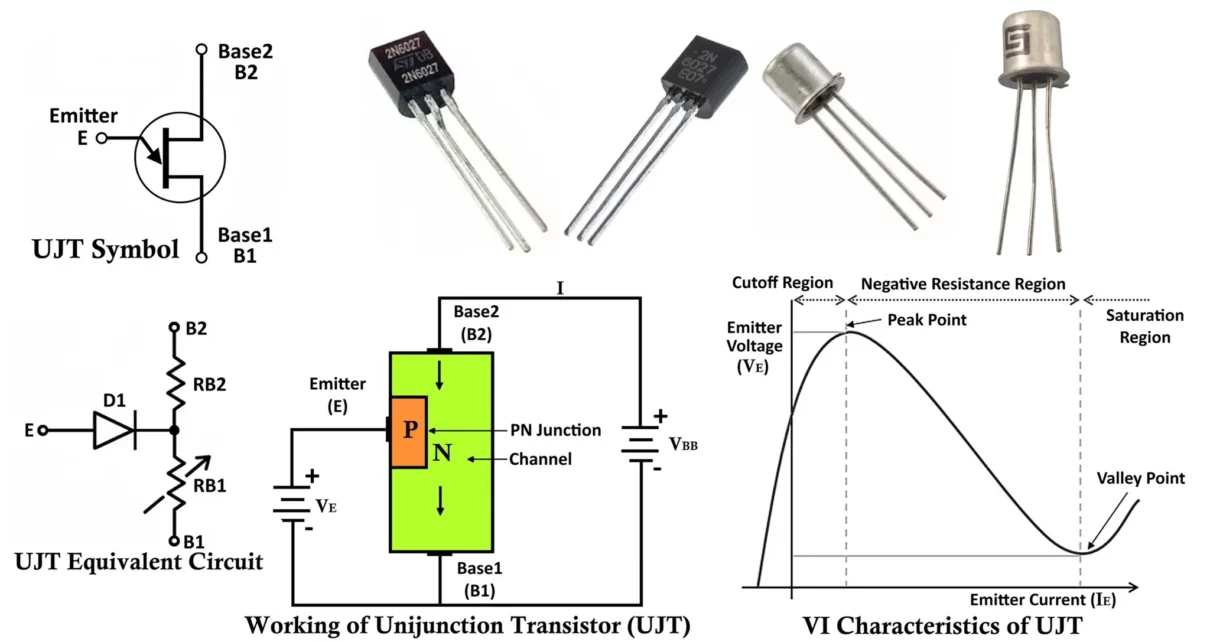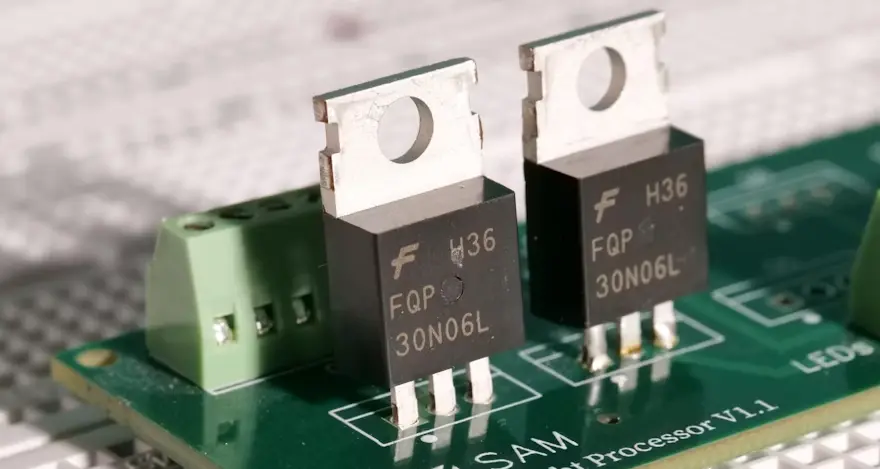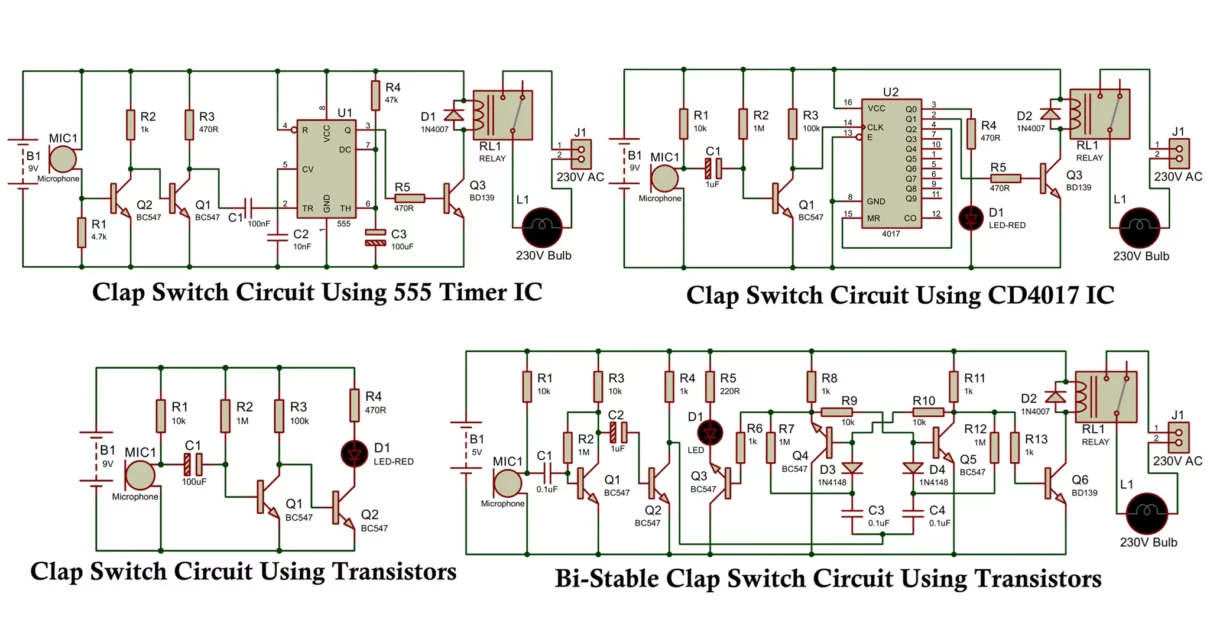Let’s explore the various types of inductors, along with their unique properties and applications. An inductor is one of the fundamental passive components used in electrical and electronic circuits, along with resistors and capacitors. It is a device that store energy in the form of a magnetic field when an electric current flows through them. The […]
Electronic components
Laser Diode – Symbol, Construction, Working, Types and Applications
A laser diode is a semiconductor device that emits coherent light through the process of stimulated emission. It operates similarly to a light-emitting diode (LED) but produces a focused, monochromatic, and coherent beam of light. The emitted light waves have the same wavelength, frequency, and phase. The laser diode was invented by Theodore H. Maiman, […]
UJT Unijunction Transistor Symbol, Construction, Working & Applications
The Unijunction Transistor (UJT) is a three-terminal semiconductor device that is mainly used for triggering, pulse generation, relaxation oscillators, and phase control circuits. Unlike the Bipolar Junction Transistor (BJT) or Field Effect Transistor (FET), the UJT does not function as an amplifier; instead, it acts as a switching device with negative resistance characteristics. The UJT […]
Everyday Devices That Use Transistors (And You Probably Didn’t Notice)
Most people never think about transistors. They’re too small to see, hidden away inside the gadgets we use every day. But without them, modern electronics wouldn’t exist. From the phone in your pocket to the microwave in your kitchen, transistors quietly do the heavy lifting. So, what exactly are they, and where do you find […]
4 Simple Clap Switch Circuits Using NE555 Timer, CD4017 IC & Transistors
A clap switch circuit is a popular DIY electronics project that lets you control an electronic device by clapping your hands. The circuit uses the sound of a clap as a trigger to turn the device ON or OFF. It finds wide use in home automation, interactive projects, and temporary lighting solutions. In this article, […]
Photocoupler (Optocoupler / Optoisolator) – Construction, Working, Types & Applications
In modern electronics, signal isolation between different parts of a circuit is crucial for protection, noise reduction, and system stability. Optocouplers, also known as optoisolators, play a vital role in achieving this electrical isolation while allowing signal transmission. This article provides a thorough exploration of optocouplers (Optoisolator / Photocoupler), including their construction, working principles, advantages, […]
